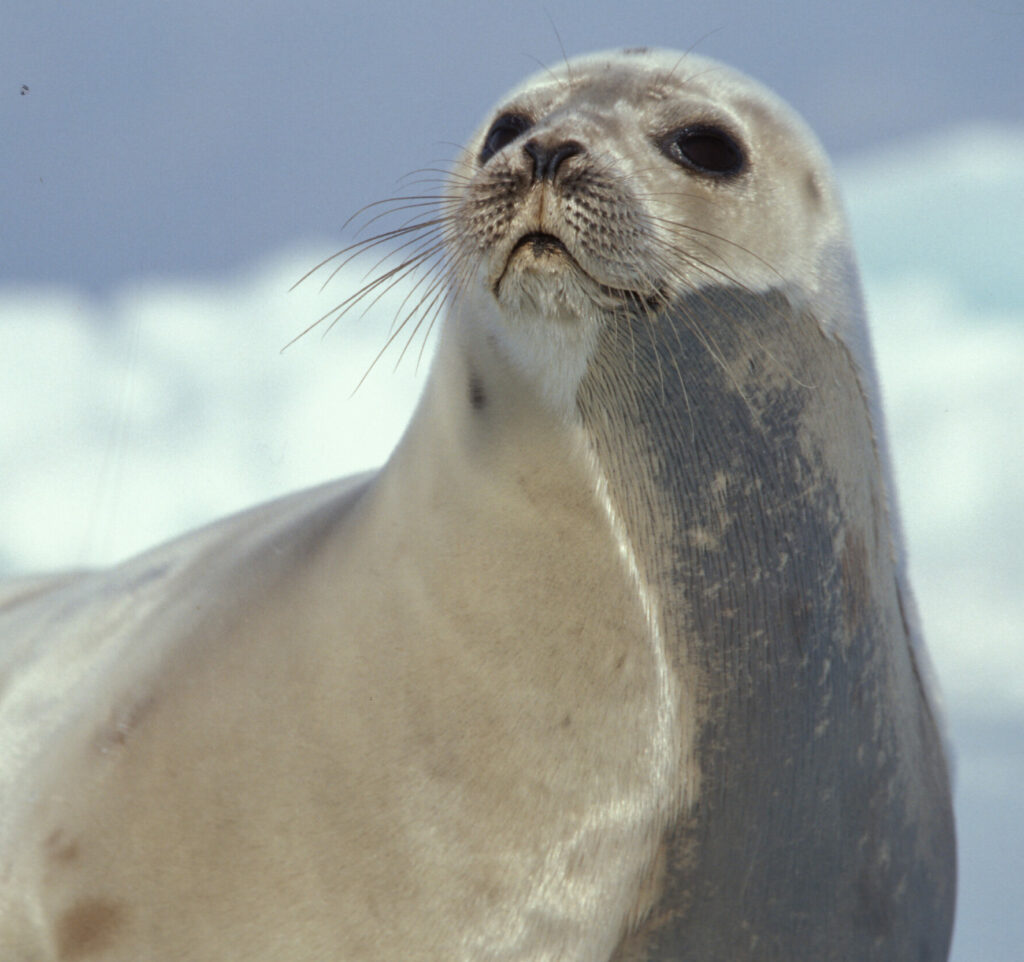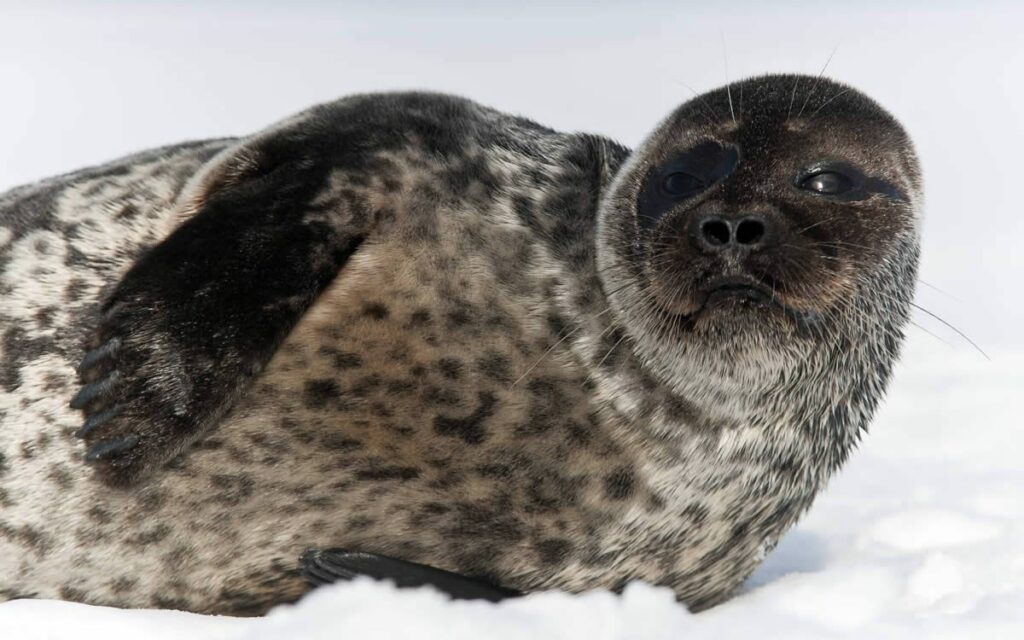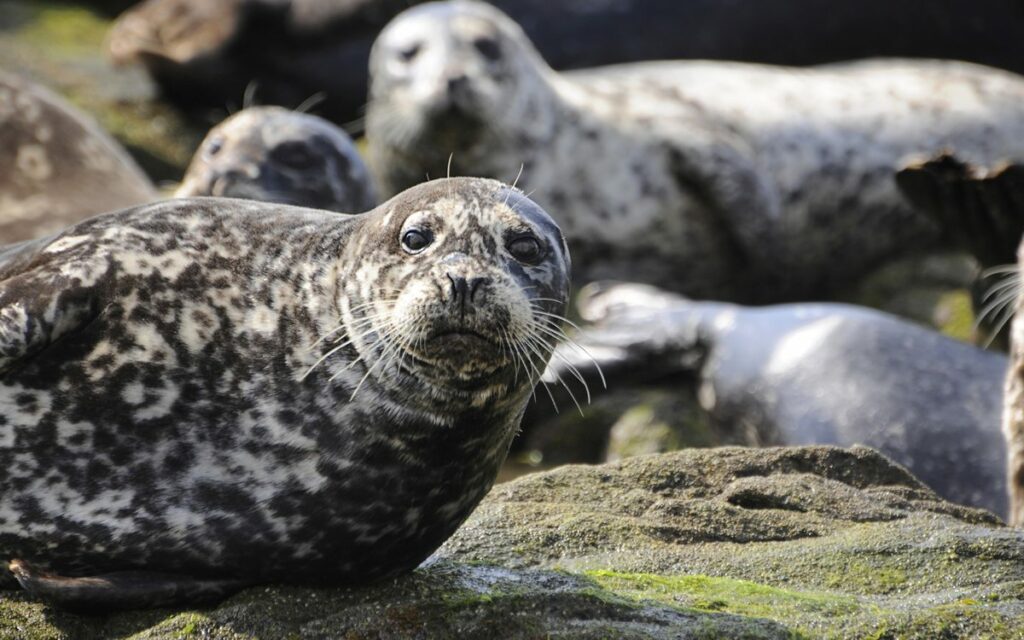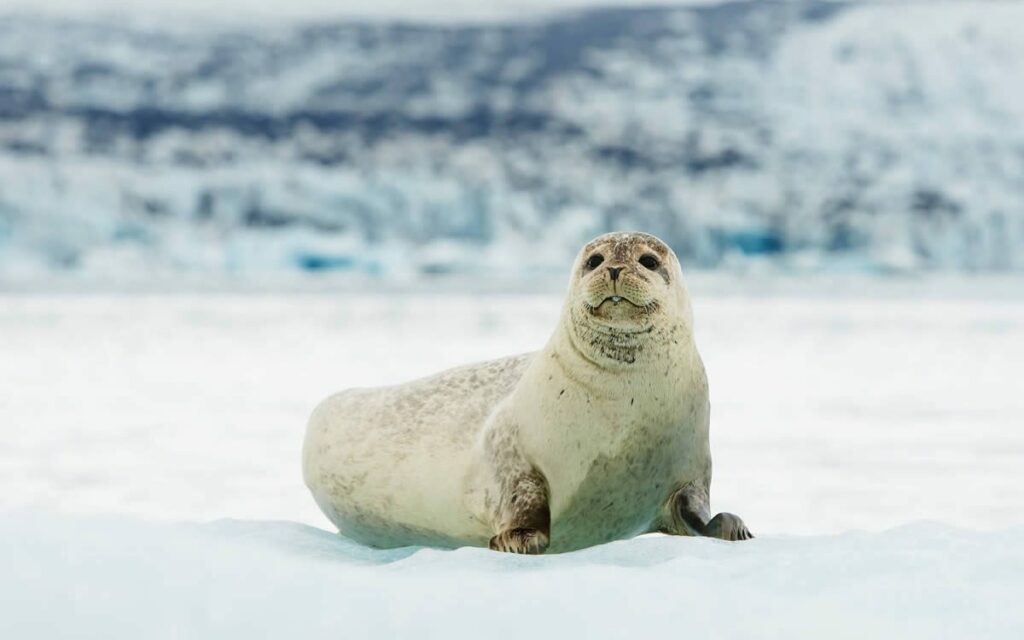The Seal
Did you know that there are 33 species of seal worldwide and that 6 of them frequent Canadian waters? Discover the differences between the different Canadian seal species.

The Seal
There are 33 species of seal worldwide; six frequent Canadian waters, others appear infrequently. Four species are harvested in Canadian waters: Harp, grey, hooded and ringed seals.
Seals are semi-aquatic mammals exceptionally adapted for life at sea: they are streamlined, efficient swimmers, deep divers, and able to stay underwater for great lengths of time—for some species, up to an hour. They are also equipped to spend at least some time on land or on the ice, where they give birth and live for varying amounts of time.
Two distinct groups of seals exist: earless (“true seals”) and eared. Six of the seal species found in Canadian waters are earless seals: harp, harbour, ringed, bearded, grey, and hooded seals. The northern fur seal, found along the Pacific coast, is eared.
All seals have excellent eyesight (in and out of water), limbs that have evolved into long-boned flippers, and valved nostrils. Eared seals, in addition to external ear flaps, have an opposable hind flipper that can be placed flat on the ground to aid movement—true seals must drag themselves along with their front flippers.
Seals dine from the sea, on various species of fish, crustaceans, and sometimes seabirds, depending on availability and preference. Many species migrate annually (harp seals may travel up to 3,200 km) between feeding grounds and mating grounds. Females generally give birth to a maximum of one pup per year after a 10-month or longer pregnancy. Pups wean quickly: true seals may nurse for as few as four days, after which time they are independent, ready to swim and hunt for themselves.
Learn more about each species
Did you know? #SealFacts
- Swimming style: For fastest swimming, the seal tucks its front flippers tight to its side and uses its tail flipper for propulsion. When the seal is moving slower, the front flippers are used as stabilizers.
- Parenting styles: Eared seals generally feed closer to shore and thus mothers can forage while lactating. Earless seals generally make long migrations to their feeding grounds; to compensate for their short (4 to 50 day) lactation period, the fat content of their milk is higher (up to 60% fat) than any other species of marine mammal.
- Staying warm: The seal’s adult coat is thick enough to trap a layer of air for insulation; better insulation is the layer of blubber below the skin.
- Predators: Polar bears, Arctic wolves, and marine animals such as sharks and orcas are seals’ primary natural predators. In many habitats, seals have few, if any, natural predators.
- Lifespan: Seals have been known to live 40 years or longer.
Seal terminology
- Adult male: bull
- Adult female: cow
- Young seal: pup
- Breeding colony: rookery
- Shedding of coat/hair: moult
- Climbing onto rocks: haul out
- Ice on which seals give birth: whelping ground
- Taxonomy: All seals are members of the superfamily Pinnipedia (“fin-footed ”), along with sea lions and walruses. The three families are monophyletic, meaning they derived from a common ancestor, the closest living relatives to which are bears.
- Diet: Seals consume an estimated 500,000 tonnes of cod per year. In Comparison, Atlantic Canada’s commercial cod catch was estimated at, only 11,000 tonnes.
- Speed: Seals may swim up to 40 km/hour.
- Depth: Seals have been known to dive to 4,100 metres (but more usually to a maximum depth of 200 metres).
- Nose: All seals have valved nostrils, which they close while in the water. On land, however, smell is important and helps mothers identify their pups in a crowd.
- Eyes: The seal’s large eyes help it see underwater; pupils close on land to protect the eye from sunlight and glare.
- Whiskers: Seals have up to 1,500 nerve endings in each whisker (a cat or rat has about 200); these super-sensitive whiskers are important to help seal detect food in murky water.





